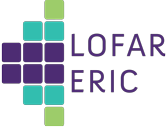Speaker
Description
Virgo, the closest galaxy cluster to us, is a unique laboratory to probe the interactions of star-forming and radio galaxies with the intracluster medium. These processes include the compression and the ram pressure stripping of the interstellar medium of star-forming galaxies and the AGN-mediated feedback of radio galaxies.
Radio frequency observations are a critical tool to understand these interactions, since they allow us to probe the ram-pressure stripped tails, compressed magnetic fields and AGN-injected plasma.
We previously completed a LOFAR HBA survey of the Virgo cluster, detecting 112 cluster member galaxies. We are currently carrying out follow-up surveys with the LOFAR LBA and MeerKAT of a >100 deg² region covering the cluster. Together, these surveys will improve the radio coverage of the system by more than an order-of-magnitude in depth, ranging from 42 MHz to 1.7 GHz.
In this talk, I will introduce these Virgo surveys, with a particular focus on the ongoing LOFAR LBA project. The major challenge of this project is the presence of the extremely bright central source M87 (= Virgo A, 2600 Jy) in the center of the cluster, imposing severe dynamic range limitations if not treated carefully. Furthermore, the low declination of the cluster (down to +4 deg) amplifies ionospheric systematics and reduces the signal-to-noise ratio. I will provide an overview on the specialised calibration strategies that are being developed to overcome these difficulties.
As an outlook for the scientific value of these data, I will present an analysis of highly extended (>0.6 deg scale) ultra-steep spectrum emission revealed for the Virgo galaxies M49 and NGC4365 by the LOFAR observations. This radio emission is ultra-steep spectrum (α < -1.5) and interpreted as past phases of AGN activity in these nearby massive early-type galaxies.

